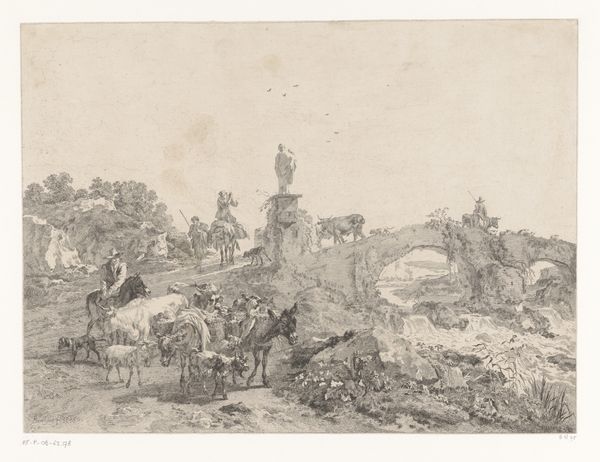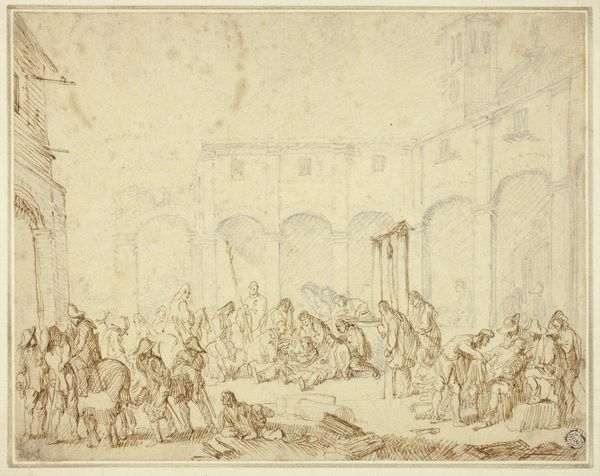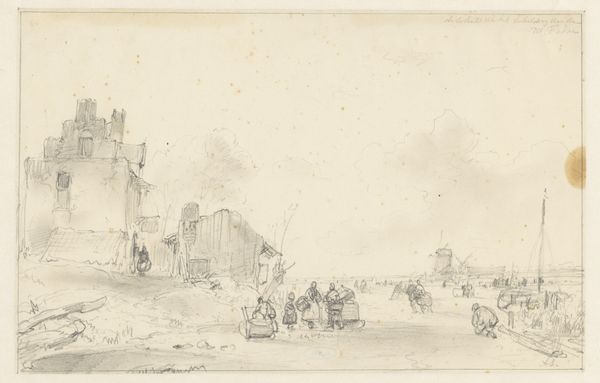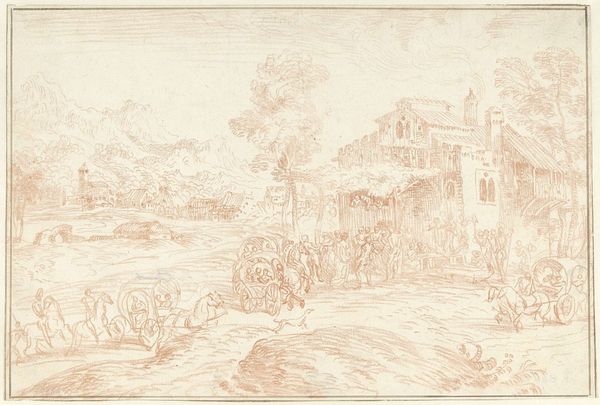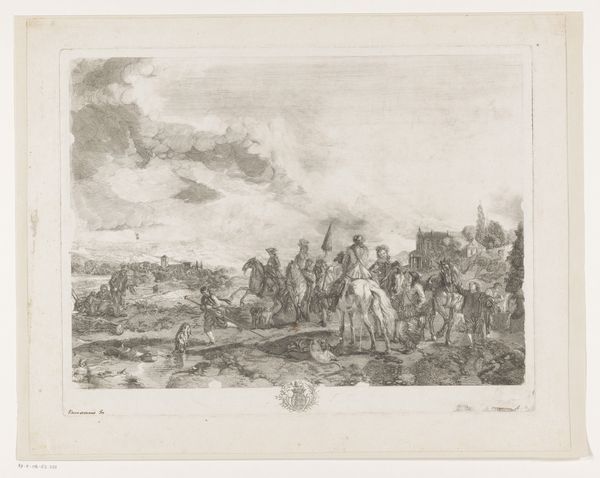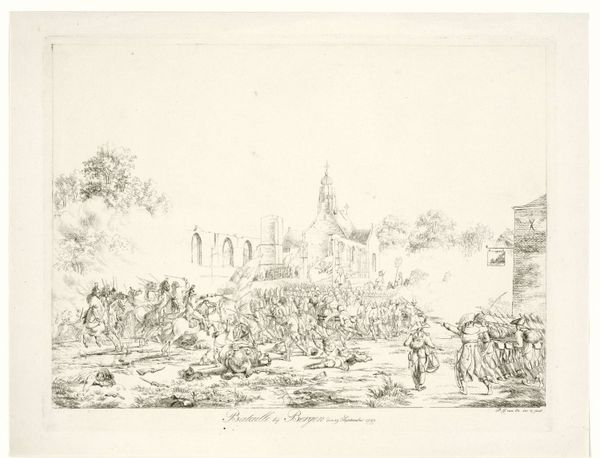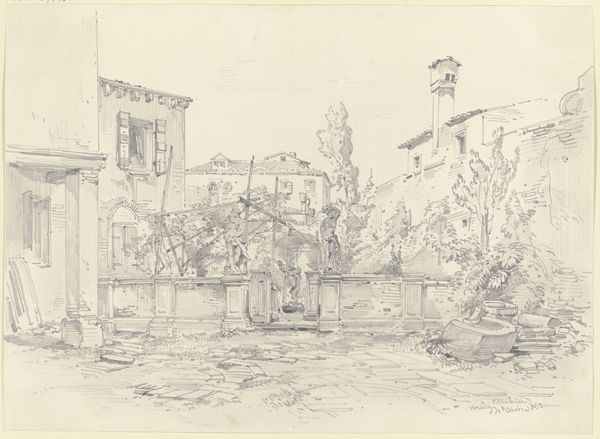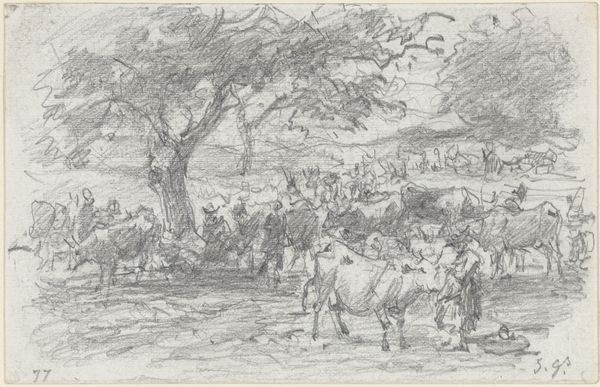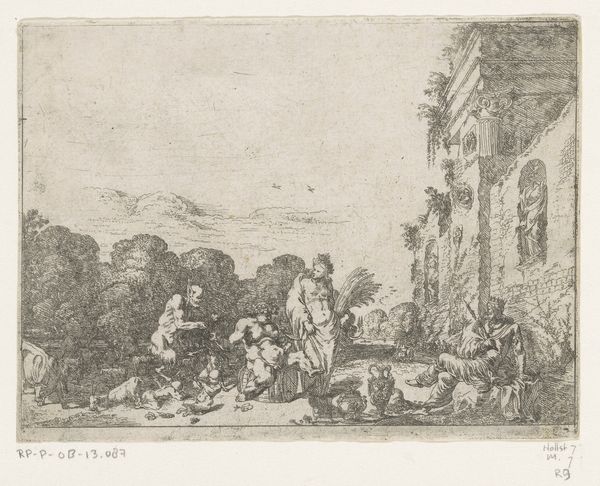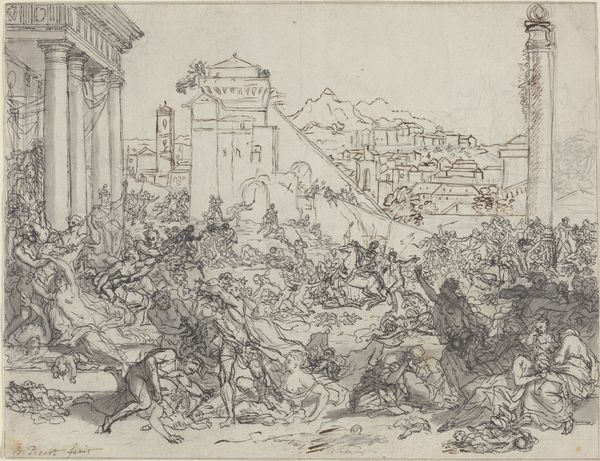
drawing, print, etching, engraving
#
drawing
#
neoclacissism
# print
#
etching
#
line
#
cityscape
#
history-painting
#
engraving
Copyright: National Gallery of Art: CC0 1.0
Curator: Looking at "Triomphe de Pompee dans Rome," or "Triumph of Pompey in Rome," created around 1775 by Gabriel de Saint-Aubin, we're observing a drawing, or rather a print—an etching and engraving—that vividly captures a grand historical scene. Editor: My initial reaction is just how incredibly detailed it is, despite being primarily a line drawing. The sheer number of figures and architectural elements creates a sense of overwhelming spectacle, like a carefully choreographed stage production. Curator: Exactly, and the neoclassical style evident here isn’t accidental. Saint-Aubin, like many artists of his time, was deeply influenced by classical antiquity. This piece allows us to think about the political climate of 18th-century France and how artists used historical narratives to comment on contemporary power structures. Depicting the glory of ancient Rome subtly critiques or perhaps idealizes contemporary regimes. Editor: And I find myself wondering about the labour involved in producing such a densely packed print. The creation of this level of detail through etching and engraving required skilled craftsmanship. And for what purpose? What was the intended audience? Curator: That's a crucial question. Prints like these weren’t just decorative; they circulated ideas. "Triomphe de Pompee" would have been disseminated amongst a specific group within French society interested in historical depictions. Its impact would spread according to specific tastes, as art functioned more socially. Saint-Aubin seems to present Pompey not just as a victor, but also within a framework that questions triumphalism itself. The image may be less about historical accuracy and more about employing it for broader, maybe critical, commentary. Editor: Seeing it through the lens of material production certainly offers another layer of insight. This work required collaborative networks, too. It wasn't simply Saint-Aubin in isolation but printers, distributors, and patrons shaping its eventual circulation and reception. A true testament to material practices and societal influences of art! Curator: Indeed. Thinking about this artwork has made me appreciate its significance. It prompts us to examine the narratives we build around power and glory. Editor: And for me, it emphasizes the human endeavor invested in even the seemingly simple medium of a printed image, transforming what at first seems decorative into a document of skill, societal commentary, and exchange.
Comments
No comments
Be the first to comment and join the conversation on the ultimate creative platform.
